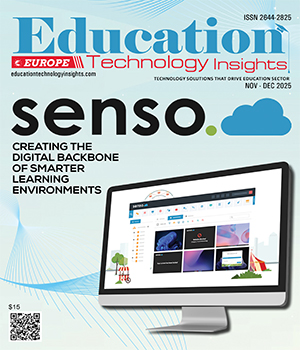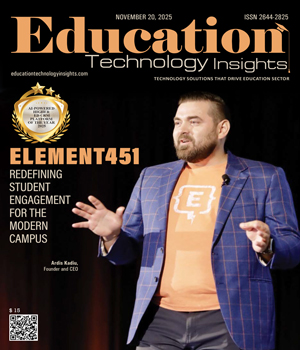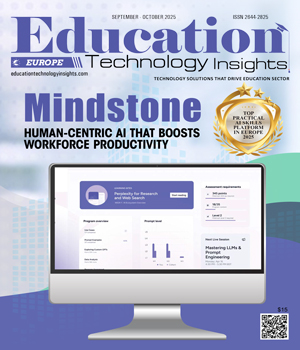THANK YOU FOR SUBSCRIBING
Be first to read the latest tech news, Industry Leader's Insights, and CIO interviews of medium and large enterprises exclusively from Education Technology Insights
The Liberal Arts to the Rescue
Renee Glass-Starek, Director, Career and Professional Development Center and Adjunct Instructor, Seton Hill University
 Renee Glass-Starek, Director, Career and Professional Development Center and Adjunct Instructor, Seton Hill University
Renee Glass-Starek, Director, Career and Professional Development Center and Adjunct Instructor, Seton Hill UniversityRenee Glass-Starek is an experienced career development leader with proven success in creating innovative career initiatives, forging partnerships, and delivering impactful programs. Recognized with national awards, she advances student success through strengths-based education, career readiness, and data-driven strategies, while championing collaboration between academia and industry.
In recent years, higher education has faced growing pressure to prove its connection to career outcomes. Students and families want assurance that the investment in a degree will lead to meaningful employment, while employers often voice concern that graduates arrive lacking workplace skills. Ironically, the very abilities employers say they need most—problem-solving, teamwork, communication, adaptability, and cultural awareness—are the same strengths cultivated through a liberal arts education. Rather than being outdated, the liberal arts are positioned to show their greatest relevance yet by embedding career readiness into every aspect of learning.
Why Career Readiness Cannot Be Ignored
The National Association of Colleges and Employers (NACE) has identified eight essential competencies for career success: career and self-development, communication, critical thinking, equity and inclusion, leadership, professionalism, teamwork, and technology. These are not tied to a single major or industry. Instead, they are transferable skills that prepare students to navigate a constantly evolving workforce.
Employers consistently report that while technical knowledge may open the door to employment, advancement, and long-term success, it relies on these broader interpersonal skills. The graduate who can analyze data, explain findings clearly, work across cultural differences, and act ethically will thrive no matter the profession.
The Distinct Edge of the Liberal Arts
Liberal arts programs foster ways of thinking and interpersonal abilities that closely match what employers look for in the workplace. Every course—whether in literature, biology, art, psychology, or philosophy—provides opportunities to develop competencies that are in high demand.
Analytical Reasoning: A philosophy class that requires students to parse moral questions develops higher-order thinking.
Collaboration: Group work in the sciences or the arts strengthens teamwork and project management.
Cultural Awareness: Courses in history, languages, and sociology nurture empathy and global understanding.
These strengths are not new to the liberal arts; they have always been central. What institutions must do now is make these connections more intentional and help students articulate how their education prepares them for professional life.
Seton Hill University as a Model
Seton Hill University in Greensburg, Pennsylvania, offers an example of how a liberal arts institution can make career readiness a campus-wide priority. At Seton Hill, career education is not limited to seniors preparing résumés but begins early and is woven through the curriculum.
The university’s comprehensive career readiness plan ensures that students:
• Identify their career interests, skills, values, and goals.
• Develop and strengthen professional competencies and self-marketing strategies.
• Evaluate and refine career options and workplace abilities through required experiential learning.
• Clarify and implement a concrete plan for life after graduation.
These elements are reinforced through a range of signature initiatives:
• Career Readiness Summit: This program introduces students to the NACE competencies and helps them connect academic experiences with career development.
• Netiquette Dinner: Students learn dining etiquette, networking skills, and the value of professional presence.
• Life Skills 101: Workshops on budgeting, personal communication, and problem-solving prepare students for both personal and professional responsibilities.
• Faculty Integration: Professors incorporate professional development into coursework, from critical thinking exercises to preparing and presenting oral reports in class.
These experiences equip students to view themselves not only as graduates seeking a first job but as adaptable professionals ready to navigate a lifetime of career transitions.
Faculty and Staff as Partners
Faculty and staff play a crucial role in bringing career readiness to life within a liberal arts framework. This does not mean sacrificing intellectual rigor. Instead, it involves drawing attention to the professional value of the work students are already doing.
Make learning outcomes explicit. When students complete a group project, highlight the teamwork and leadership skills they are developing. When writing assignments are graded, connect the feedback to communication skills valued in the workplace.
Encourage reflection. Provide opportunities for students to consider how their experiences build competencies that will transfer to future roles.
Collaborate with career services. Career professionals can partner with faculty to deliver workshops, co-teach career-focused assignments, or guide students in identifying marketable skills.
Engage alumni voices. Alumni stories provide living proof that a liberal arts education leads to diverse, successful career paths.
Reclaiming the Power of the Liberal Arts
The mission of the liberal arts has always been to form critical thinkers and responsible citizens. In today’s professional landscape, those qualities are exactly what employers seek. When institutions intentionally connect the liberal arts with career readiness, they reinforce the enduring relevance of this tradition.
The liberal arts do not need to be “rescued” from charges of irrelevance. Instead, they are the very rescue higher education needs. By helping students recognize and communicate the value of their learning, faculty and staff can demonstrate that the liberal arts are not a luxury. They are essential preparation for the world of work and for meaningful lives beyond it.
Read Also
Navigating Course Map Design
Beyond the Classroom: Supporting Belonging and Wellbeing for International Students
Building Responsible AI Practice Across a University
Designing Engagement That Lasts
Digital Creativity as a Catalyst for Deeper Learning
Protecting Precious Cargo: A Comprehensive Look at School Bus Safety

I agree We use cookies on this website to enhance your user experience. By clicking any link on this page you are giving your consent for us to set cookies. More info

However, if you would like to share the information in this article, you may use the link below:
www.educationtechnologyinsightseurope.com/cxoinsights/renee-glass-starek-nid-3461.html






















